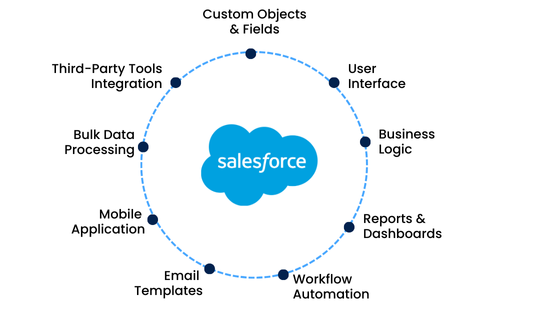Digital transformation is picking up speed in Dubai, and businesses aren’t waiting around. More and more companies are turning to Salesforce to sharpen how they operate, connect with customers, and close deals faster. But getting the most out of Salesforce isn’t just about buying the software—it’s about using it the right way. That’s where a certified Salesforce consultant in Dubai really makes a difference, helping you tap into CRM tools and set your business up for real, long-term growth.
A good consultant does more than just show you the ropes. From the first bit of advice to hands-on setup and customization, they make sure your CRM actually fits your business—not the other way around.
Why Dubai Enterprises Go for Salesforce Consulting
- CRM Built Just for You
Every business runs differently, and a solid Salesforce consulting partner in Dubai gets that. They build Salesforce systems that match your goals, cut out busywork, and help your team actually work together—not against each other.
- Seamless Integration
Already using other business tools? No problem. An experienced Salesforce developer in Dubai links Salesforce with your ERP, accounting, or marketing platforms, so your data stays in sync and easy to find, no matter what department needs it.
- Better Customer Experiences
Salesforce consultants in Dubai help you automate lead tracking, personalize how you talk to customers, and keep people engaged. End result? Happier customers who stick around.
- Smoother Operations
With the right consultant, you can ditch repetitive tasks, create clear sales processes, and keep an eye on performance as it happens. Suddenly, your team gets more done—and makes smarter calls, too.
- Ready to Grow
Your business won’t stay the same size forever, and your CRM shouldn’t hold you back. A professional Salesforce consulting partner in Dubai makes sure your platform grows with you, so you’re ready for whatever comes next.
What You Get from Working with Salesforce Consultants in Dubai
- Automated workflows that actually save time
- Sales, marketing, and support teams working together, not in silos
- Real insights from dashboards that make sense
- Faster returns because your CRM isn’t slowing you down
- Ongoing help to keep things running smoothly
How to Pick the Right Salesforce Consulting Partner in Dubai
Don’t just look for a bunch of certifications. Dig into their experience, check out what other clients say, and make sure they don’t disappear after setup. The right team won’t just install Salesforce—they’ll teach your team, offer advice, and stick around for the long haul.
A trusted Salesforce consultant in Dubai isn’t just a vendor—they’re your partner in building digital success that lasts.
Final Thoughts
For businesses in Dubai, bringing in Salesforce is more than a tech upgrade. It’s a real leap toward efficiency and fresh ways of working. With the right Salesforce consultants on your side, you can cut out chaos, connect with customers in smarter ways, and scale up—fast—in a market that never slows down.




